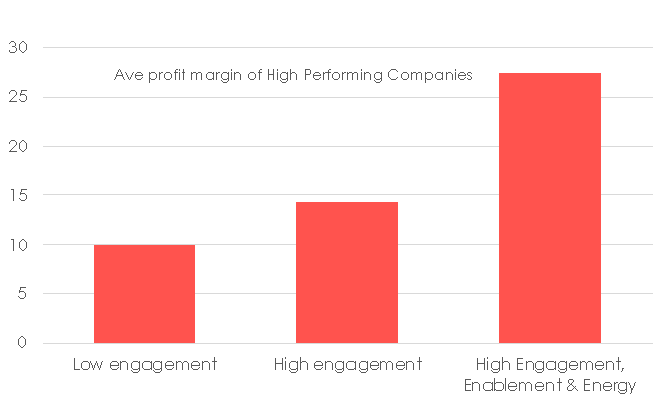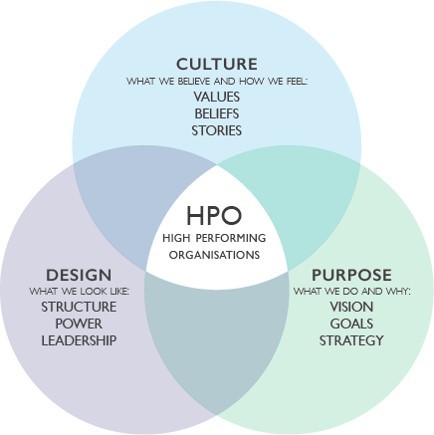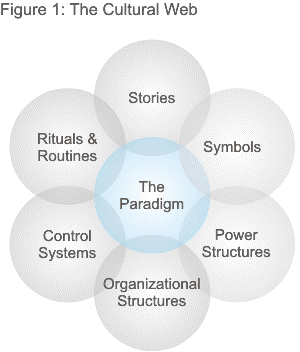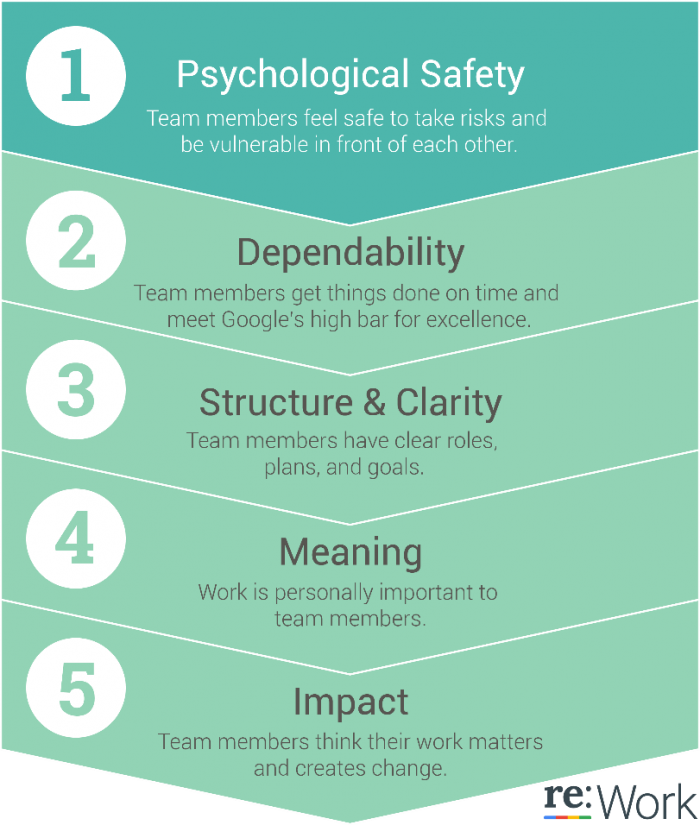Let’s start with a truism: Change is hard. I carry out a lot of individual assessments in my work, spending half a day doing a deep dive with senior leaders, trying to find their inner most values, motivations and de-railers. I then write a 2000 word report and meet them again to draw up a Development Action Plan. Sometimes I continue to coach them for 6 months afterwards. It is deep, dedicated, expensive work. Even then, I’m afraid, significant sustainable change doesn’t always happen.
So imagine how exponentially harder it is to change an organisation’s culture. Making an intervention that involves not one but hundreds or thousands of individuals.
Luckily, as we shall see, I believe there is one particular collective mindset that can be fostered that you could almost call a “silver bullet” for getting culture right. Which is really important because getting culture right has massive material value.
Why is a good culture important?
A healthy culture increases net revenue by 765% over ten years, according to a Harvard study of 200+ companies. Another study of high performing businesses by Willis Towers Watson revealed that strong culture correlated with a threefold differential in profit margins (see table).

Willis Towers Watson defined healthy culture as comprising high engagement, high enablement and high energy levels, as reported by staff. There are, of course, many, many ways of defining culture and it is certainly a more nebulous concept than, say, high-performance, or even potential. However, like the US Judge asked to define pornography, who eventually proclaimed, “I can’t define it but I know it when I see it”, we all can feel, quite quickly, on an intuitive level, when we are part of a good, great or terrible culture. We just sense it.
That gut feeling is crucial to understanding culture change. Because while there are a lot of practical, logical, systemic, “OD” things to get right, the crucial factor is an emotional one: How does this culture make me feel?
What does cultural change involve?
We reflect all this in our “High Performing Organisations” model. As you can see Design and Purpose are essential, but the Culture aspect is at the top:

Helping organisations think about, transform and better articulate their culture requires a deep understanding of the formal, informal and unconscious dynamics at play. Sometimes these don’t align, they may even clash. What is stated as being the case isn’t always so. Really understanding an organisation’ culture means going below the surface.
It involves asking questions such as:
How does working here make me feel?
What’s the “personality” of this place?
What is the story/stories we tell about it?
What’s really valued – and rewarded – around here?
How do things get done around here?
What’s our organisational DNA?
To really understand an organisation you need to know its history, rituals, stories, myths and underlying “realpolitik” power structures:

You need to know what your people would say to their best friend if they asked: “What’s working there really like?”
Why is cultural change so difficult?
Culture change is hard because nothing changes in an organisation unless people’s behaviour changes and behaviour is driven by underlying assumptions/beliefs that are not always articulated openly and can be at least partly unconscious. Therefore:
Any sustainable shift in the culture has to be informed by a deep psychological dive into individual and collective belief systems. It is vital to surface and understand the underlying assumptions that drive current behaviour and identify the new assumptions that you want to drive changed behaviour.
Executive leaders will need to be clear on their personal commitment to sustain a long-term journey to real cultural change. At CDP we won’t work with an organisation on its culture unless there is buy-in and active engagement from the CEO. Iconic change requires modelling from the very top.
Change will only take off and embed if it is reinforced in day-to-day activity. This will require dismantling culturally dissonant organisational systems and processes, habits, ways of working, etc. There has to be zero tolerance of repeated non-cultural behavior , even if there is a business cost to taking action (i.e. firing a very high performing bully). Real change always involves some sacrifice.
Is there a silver bullet for creating a healthy culture?
So, to conclude, among all this fascinating stuff, what is the silver bullet mentioned in our headline?
It is a concept that is usually applied to teams, but I believe is also the bedrock of any culture which seeks to improve (to go back to the Willis Towers Watson definition) people’s engagement, sense of enablement and energy.
It is the concept of “psychological safety”.
This is, according to the Harvard Business School academic credited with popularising it, “a sense of confidence that the team will not embarrass, reject or punish someone for speaking up.” (Amy Edmonson, 1999).
Google spent millions of dollars doing a huge study of their teams to discover the crucial ingredient for team success. They were surprised to discover that characteristics such as levels of intelligence (within reason), types of personality (again, within reason), experience, mix of people, drive etc. were not the determining factors.
I’ll let google themselves tell the story:
“A group of us in Google’s People Operations (what we call HR) set out to answer this question using data and rigorous analysis: What makes a Google team effective? We shared our research earlier today with the Associated Press and we’re sharing the findings here, as well.
Over two years we conducted 200+ interviews with Googlers (our employees) and looked at more than 250 attributes of 180+ active Google teams. We were pretty confident that we’d find the perfect mix of individual traits and skills necessary for a stellar team — take one Rhodes Scholar, two extroverts, one engineer who rocks at AngularJS, and a PhD. Voila. Dream team assembled, right?
We were dead wrong. Who is on a team matters less than how the team members interact, structure their work, and view their contributions. So much for that magical algorithm.
We learned that there are five key dynamics that set successful teams apart from other teams at Google:
Psychological safety: Can we take risks on this team without feeling insecure or embarrassed?
Dependability: Can we count on each other to do high quality work on time?
Structure & clarity: Are goals, roles, and execution plans on our team clear?
Meaning of work: Are we working on something that is personally important for each of us?
Impact of work: Do we fundamentally believe that the work we’re doing matters?
If you answered “yes” to the five questions above, congrats! You’re probably on a high-performing team. And if not, not all hope is lost. This is a shortcut to help you figure out where to focus, how to get better, and a way to talk about this concept with your teammates in a structured way.

Psychological safety was far and away the most important of the five dynamics we found — it’s the underpinning of the other four.”
Source: re:Work, the google people website
So what are the advantages of building culture of psychological safety?
Frees up resources wasted on self-protection (hiding, lying, faking), allowing people to collaborate with ease and think creatively. It allows us to innovate and improve.
Builds an organisation characterised by interpersonal trust and mutual respect in which people are comfortable being themselves, offering their views and taking risks.
Fosters a more innovative environment where people learn from their mistakes and hence grow and develop, because shame or fear of criticism/being shamed/failing/being ‘the one’ who negatively impacted a project is less present.
Creates a culture in which courageous conversations — the conversations about the organisation’s weaknesses, blind spots and potential failings — and the resulting growth from those conversations, are more likely to happen.
Conclusion
Don’t be put off by the enormity of culture change, all the competing theories about it, and the fees consultants like us will charge for helping you ?. Start with creating a sense of psychological safety the next time you speak to someone 1:1, in the next meeting you attend and in your team. Showcase this and find ways to spread the word across your organisation. Embed psychological safety at the heart of your everything you do, and watch your culture improve organically from within.
Derek Draper – chief executive of CDP Leadership Consultants and author of Create Space: How to Manage Time and Find Focus, Productivity and Success.






